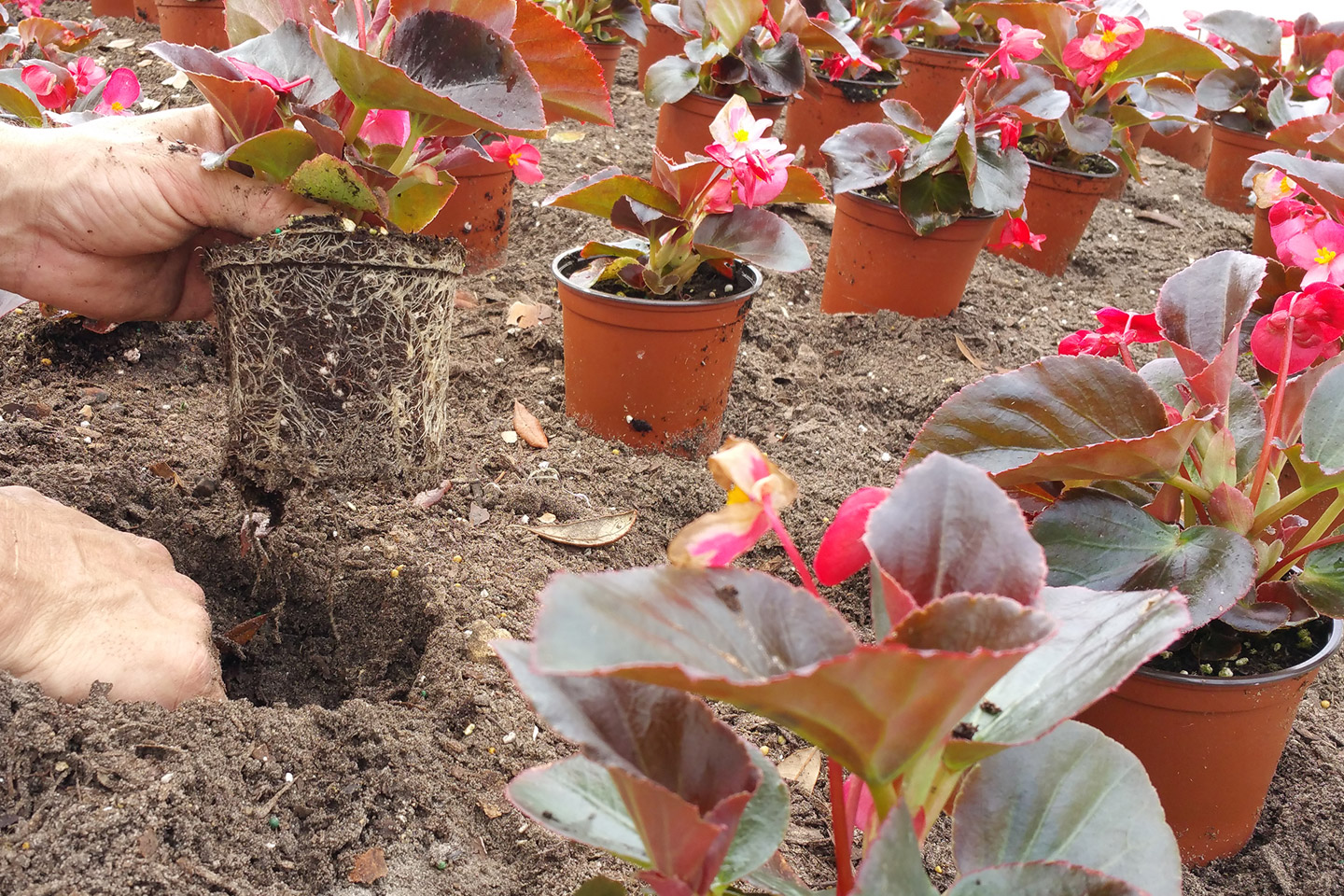The Vital Role of Bats in our Florida Landscape - Sit Down with CEPRA
Florida is home to a diverse array of wildlife, with bats playing a crucial, though overlooked function in contributing to the health and balance of our landscape. These nocturnal mammals play an important role in controlling insect populations. They are mammals that can truly fly.
There are 13,000 bat species in the world and out them, 13 are native species that are year-round residents in Florida. There are also seven other species of bats that have, on occasion, been found in Florida but they do not normally live here. These are referred to as accidental species. Three are from more northern climates and eat insects, while four species are from more tropical regions and feed on nectar, pollen and fruit. The bat populations are declining due to human disruption and loss of natural habitat.
Here are a few examples of our native bat species:

Brazilian Free-Tailed Bat
Brazilian Free-Tailed Bat
Their short fur ranges from dark brown to grayish-brown and have a tail that extends past its short tail membrane. They are most often recognized by the strong, musky odor they emit due to a scent gland they have. They roost in large colonies ranging from a few hundred up to several thousand and prefer man-made structures such as buildings and bridges and especially under barrel tile roofs. The Brazilian free-tailed bat is the most common bat in Florida and is found throughout the state excluding the Keys.
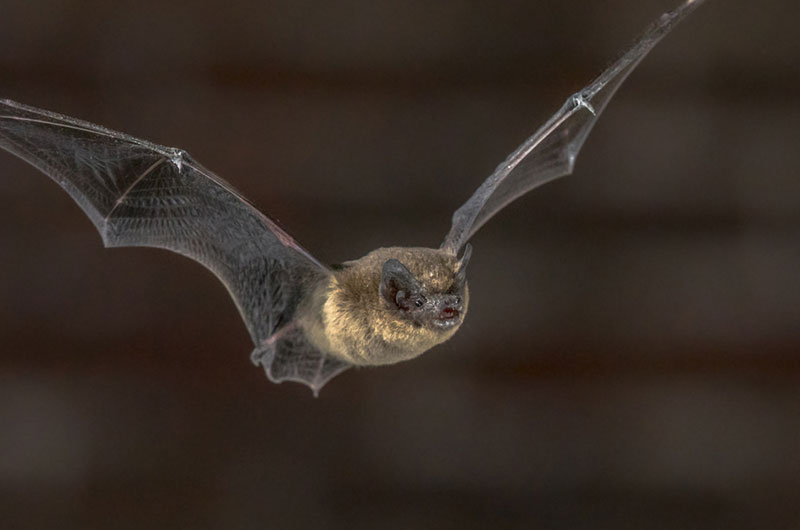
Evening Bat
Evening Bat
Common throughout all of Florida except in the Keys, evening bats form colonies of about eighty bats in buildings and other man-made structures such as bridges, utility poles, and bat houses. They have brown fur on the back and whitish fur on the stomach with a "dog-like" muzzle.
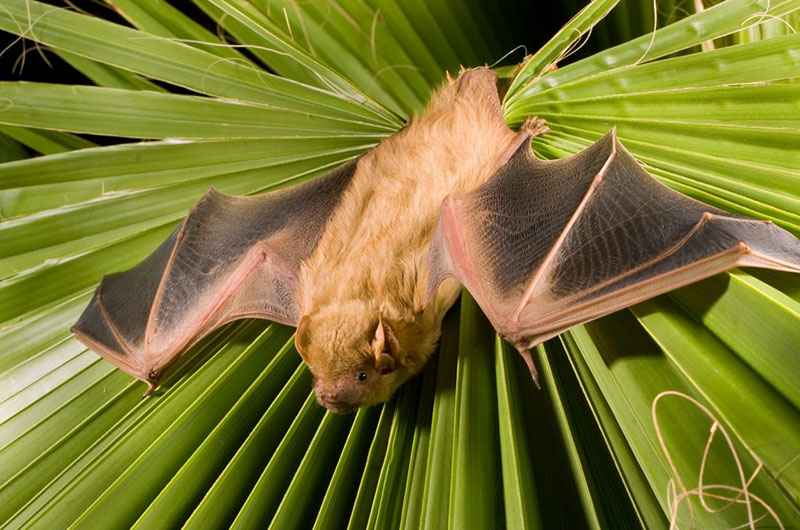
Northern Yellow Bat
Northern Yellow Bat
The Northern yellow bat is large with thick yellowish to grayish brown fur, perfect for allowing it to be hidden while roosting in the dead palm fronds of sabal palms. They are commonly found throughout Florida except in the Florida Keys.
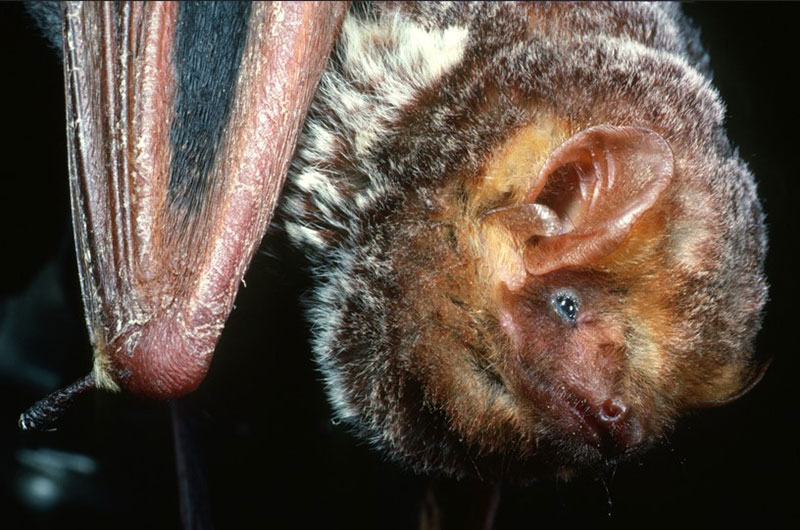
Seminole Bat
Seminole Bat
Similar in appearance to the Eastern red bat, the Seminole bat has rich mahogany fur with white tips and white on the shoulders and wrists. Solitary, they roost in pine trees and Spanish moss. They are another bat species found in all of Florida except in the Keys.
One of the most significant contributions of bats is their role in natural pest control. All bats in Florida are insectivores. They eat a lot of moths, flies, beetles, wasps, ants, mosquitoes and other landscape pests. Many bats can eat their body-weight in insects every night. This is especially important in Florida, where these pests can thrive in our warm, humid climate.
Some of the bat species forage as far as 25 to 30 miles from their home each night and return each morning before dawn. They often fly at heights of 20 to 50 feet above the ground but have been reported several thousand feet up in the sky. While most of Florida's bats are insectivorous, a few species contribute to pollination and seed dispersal.
Bats live in many different habitats across Florida. They can be found in dry, upland pine forests, in the hardwood forests along the banks of rivers, and most habitats in-between. You can even find them flying around in your neighborhood! If you find a bat, never pick up or hold it. Bats can contract rabies and spread it to people through bodily fluids or bites.
For bats, one of the most important parts of their habitat is a place to roost. In Florida, natural roosting sites can be caves, in cracks, crevices or hollows of trees, under dead fronds of palm trees, and in Spanish moss. Bats also use manmade structures including bridges, culverts, tile roofs and bat houses.
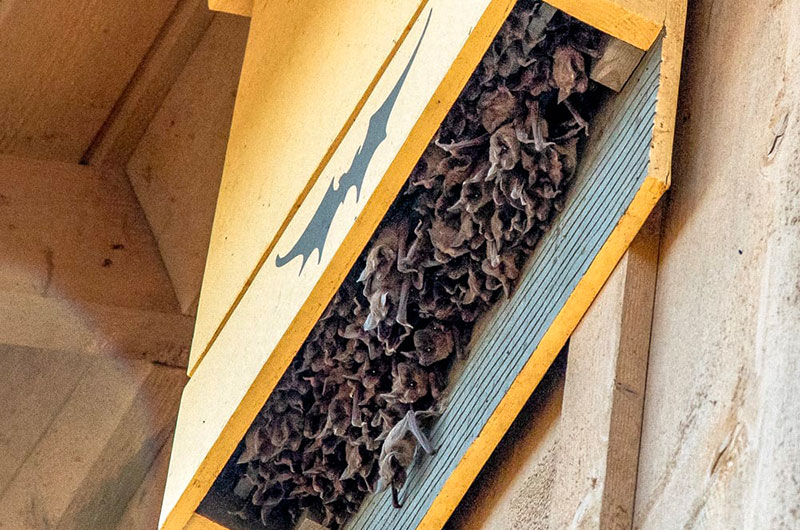
Bat House Example
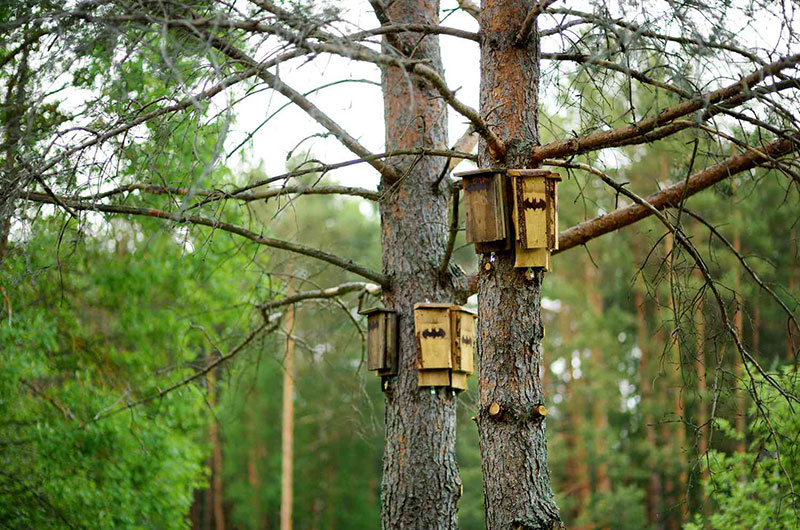
Bat House Example
Bats are an excellent indicator of environmental health. Their presence or absence reflects the state of a local ecosystem. A healthy bat population suggests a balanced environment with ample food sources, clean water and safe roosting sites. Conversely, declining bat populations can signal habitat degradation, pollution or the overuse of pesticides.
Recognizing the importance of bats, various conservation efforts are underway in Florida. The University of Florida Bat Houses are the world's largest occupied bat houses with an estimated population of 500,000. The most common species living there is the Brazilian free-tailed bat, and there are some Southeastern bats and Evening bats. The structures are located in Gainesville, on the north side of Museum Road between Village Drive and Radio Road across from Lake Alice on the UF campus. Parking is free after 4:30 p.m. weekdays, and on weekends and state holidays. The bats normally emerge 10 to 15 minutes after sunset before total darkness when temperatures are 65 F or higher. High winds, heavy rain or cold temperatures will keep the bats inside for the evening. On warm winter evenings, the bats may come out for a drink of water at the lake and exercise; however, they can eat only when bugs are flying.
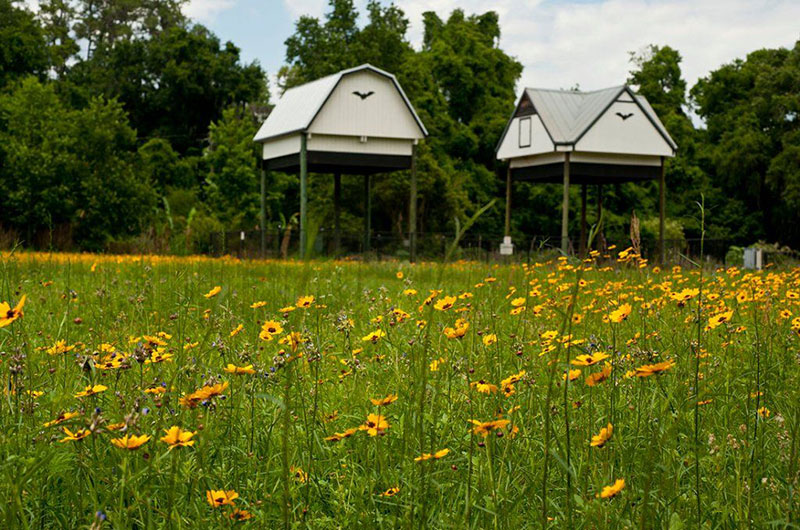
University of Florida Bat Houses
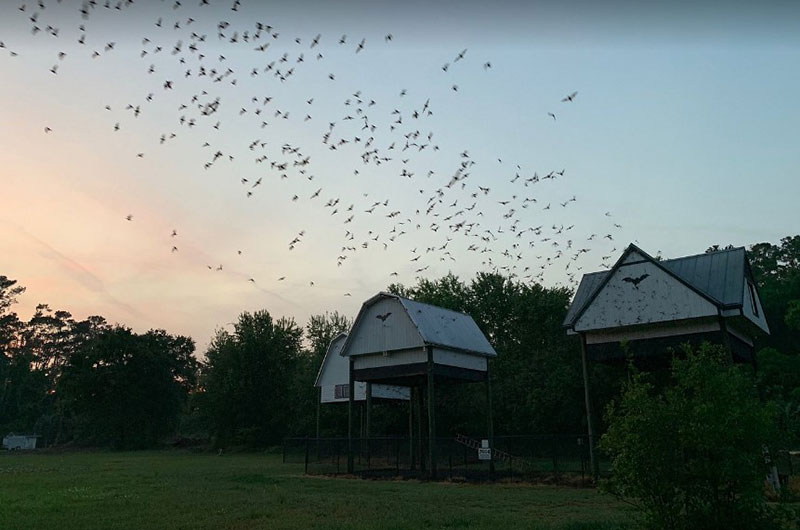
University of Florida Bat Houses
Bats are indispensable to the health and stability of Florida's landscapes. From controlling insect populations to adding in pollination, they perform essential ecosystem services that benefit both environment and human communities. Protecting bats is not just about preserving a single species; it's about safeguarding the intricate web of life that makes Florida's environment so unique and vibrant.
